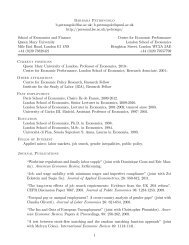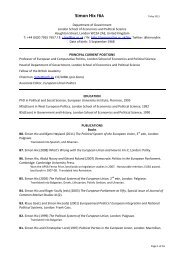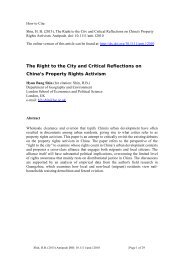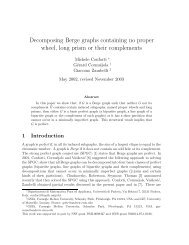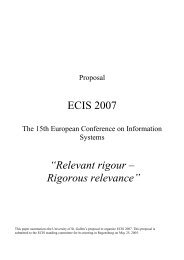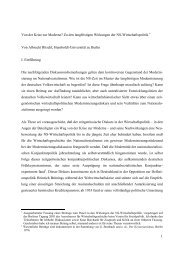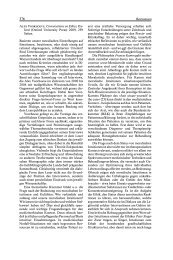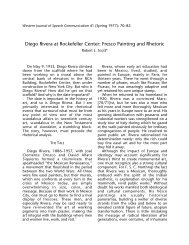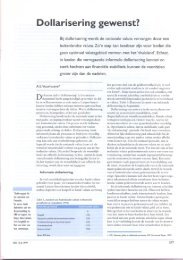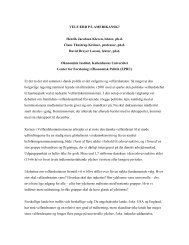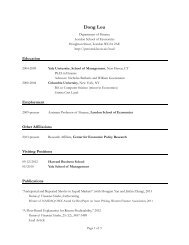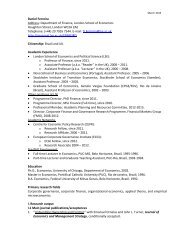Reference: MA, Debin. “The Great Silk Exchange: How the World ...
Reference: MA, Debin. “The Great Silk Exchange: How the World ...
Reference: MA, Debin. “The Great Silk Exchange: How the World ...
Create successful ePaper yourself
Turn your PDF publications into a flip-book with our unique Google optimized e-Paper software.
silk industry to <strong>the</strong> onslaught of <strong>the</strong> world’s oldest and most competitive silk industry, that<br />
of China. The year when <strong>the</strong> city of Manila was founded by <strong>the</strong> Spaniards, 1571, marked, as<br />
Flynn and Giraldez (1995) have forcefully argued, <strong>the</strong> birth of Pacific trade and <strong>the</strong><br />
emergence of global trade. The Canton-Manila-Acapulco triangular trade of silver for silks<br />
between China and New Spain could be viewed as a Pacific extension of <strong>the</strong> concurrent<br />
Nagasaki-Macau-Canton silver for silks exchange intermediated through <strong>the</strong> Portuguese<br />
and later <strong>the</strong> Dutch; but it was an extension of global proportion, as silk quickly found its<br />
way into <strong>the</strong> gigantic swirl of <strong>the</strong> global flows of precious metals in <strong>the</strong> wake of <strong>the</strong><br />
discovery of gold and silver mines in <strong>the</strong> New <strong>World</strong>.<br />
China’s huge demand for silver resulted mainly from <strong>the</strong> Ming government’s<br />
conversion to a silver standard, which provided significant arbitrage possibilities because of<br />
<strong>the</strong> gold/silver ratio discrepancies between Asia and Europe. China became a huge “suction<br />
pump,” drawing silver first from Japan, <strong>the</strong>n from Mexico and Peru. According to<br />
conservative estimates, fully 75 percent of <strong>the</strong> 400 million pesos of silver bound for <strong>the</strong><br />
Philippines during <strong>the</strong> period 1565-1820 ended up in China. On average, roughly two<br />
million pesos of silver were shipped through Manila in <strong>the</strong> seventeenth century. <strong>How</strong>ever, it<br />
is important to note that <strong>the</strong> strength of <strong>the</strong> “suction power” from China was sustained by<br />
silk threads - Chinese silk was <strong>the</strong> single most important export item to both Japan and<br />
Spanish America. In <strong>the</strong> high stage of <strong>the</strong> trade, China sent three- or even four-million<br />
pesos worth of silk goods a year to New Spain. For example, in 1727, China exported close<br />
to one million pounds of raw silk as well as a large amount of finished silk products to New<br />
Spain (Fan and Wen 1993: 282). 14<br />
16



